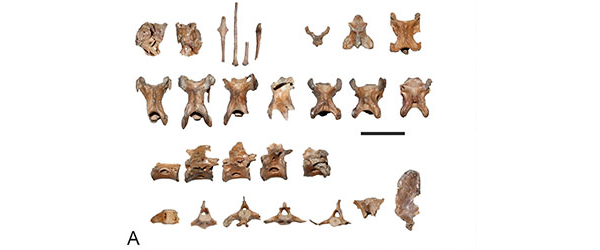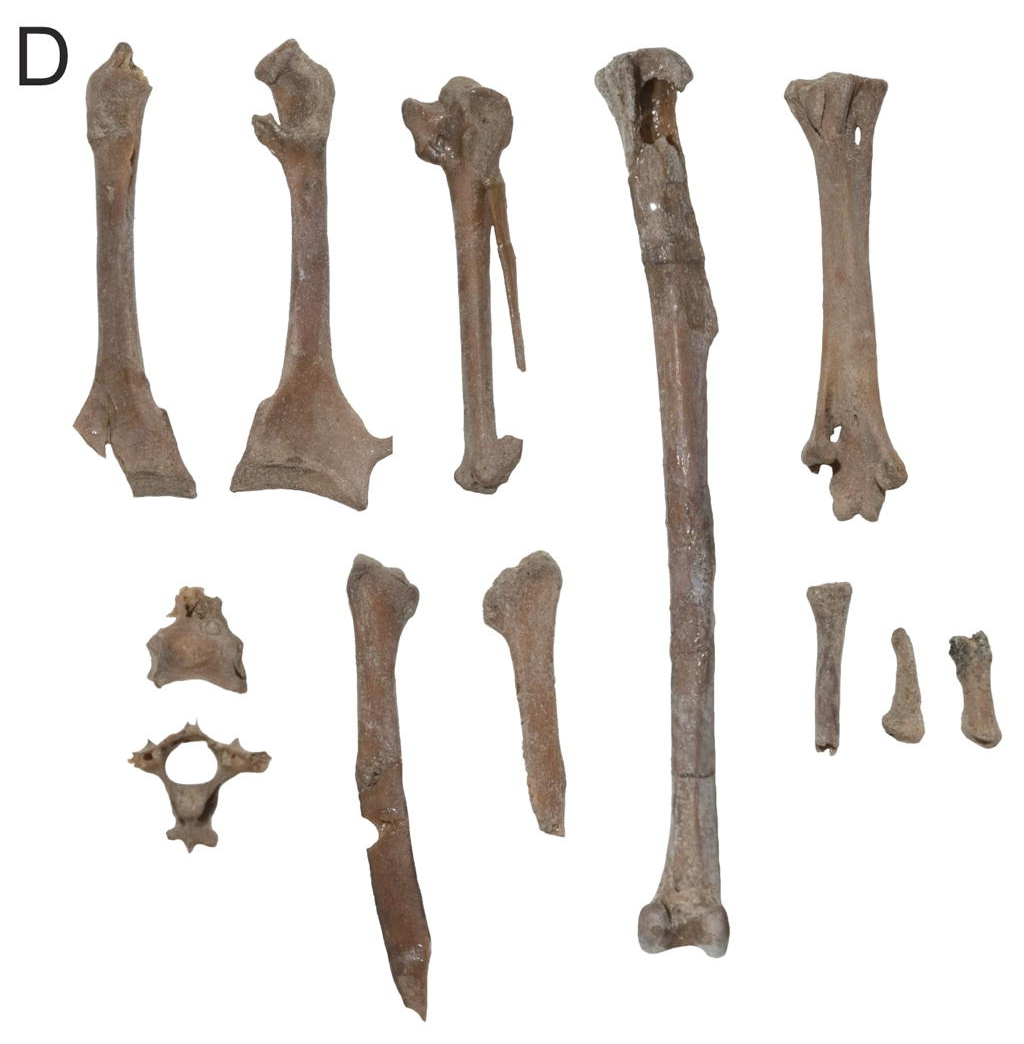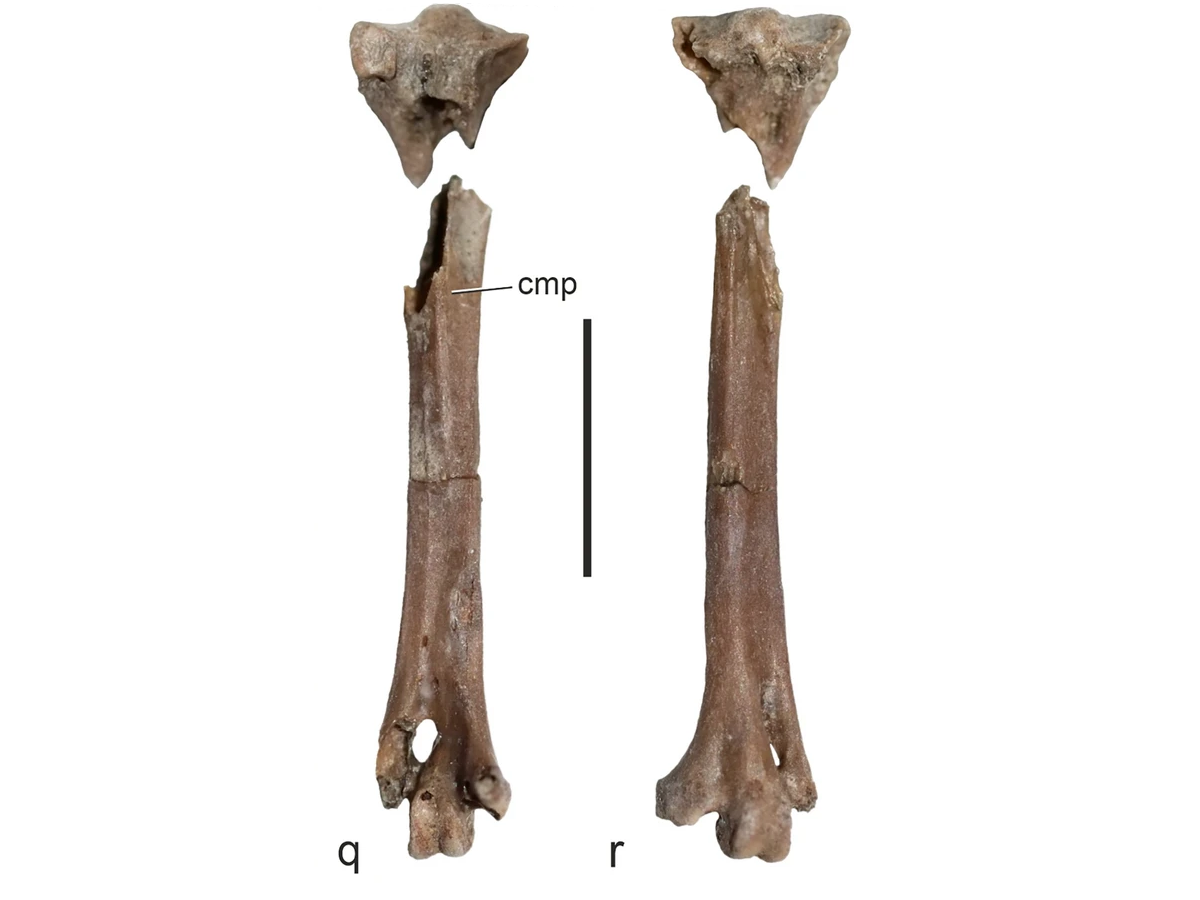Perplexicervix paucituberculata Mayr et al., 2023 (new species)
(Type specimen of Perplexicervix paucituberculata [scale bar = 10 mm], from Mayr et al., 2023)
Meaning of name: paucituberculata = little tuberculate [in Latin]
Age: Eocene (Ypresian), 54.6‒55 million years ago
Where found: London Clay Formation, Essex, U.K.
How much is known: Partial skeleton including vertebrae and fragments of the skull. Partial skeletons of two other individuals may also belong to this species.
Notes: P. paucituberculata was an unusual bird that had small bumps covering its neck vertebrae. This feature is shared with the only other species of Perplexicervix that had been previously named, P. microcephalon, as well as with Dynamopterus tuberculatus (a possible close relative to modern seriemas), both of which are from the Eocene of Germany. In fact, the neck vertebrae of P. microcephalon are even more extensively coated in these bumps than those of P. paucituberculata. Similar structures have not been observed in extant birds and their function is unknown. When they were first noticed in fossil birds, it was thought that they may have been the result of an ancient disease that no longer affects birds today. However, the fact that all known specimens of Perplexicervix preserving neck vertebrae have these bumps suggests that they were instead a typical part of their anatomy.
What type of extant bird Perplexicervix was most closely related to is also unclear. Similarities to waterfowl (specifically screamers) had been noted in earlier studies, and the type specimen of P. paucituberculata had been briefly mentioned in a previous paper as an early waterfowl. New specimens, however, indicate that Perplexicervix did not have the characteristic lower jaw anatomy shared by both waterfowl and landfowl. The describers of P. paucituberculata instead note that some of its bones bear noticeable resemblance to those of bustards, a group of often large, ground-dwelling birds that live in Afro-Eurasia and Australasia today. A close relationship with bustards would be very noteworthy if upheld by future research, given that early members of the bustard lineage are otherwise unknown from the Paleogene Period.
Reference: Mayr, G., V. Carrió, and A.C. Kitchener. 2023. On the “screamer-like” birds from the British London Clay: an archaic anseriform-galliform mosaic and a non-galloanserine “barb-necked” species of Perplexicervix. Palaeontologia Electronica 26: 33. doi: 10.26879/1301











